-
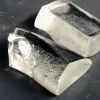 +44 +1
+44 +1LionGlass: New Type of Glass That’s Greener and 10x More Damage Resistant
Globally, glass manufacturing emits at least 86 million tons of carbon dioxide annually. However, a new type of glass called LionGlass, developed by Penn State researchers, offers the potential to reduce this carbon output by 50%. Not only does this innovative glass demand considerably less energy f
-
 +27 +1
+27 +1New recyclable rubber material repairs itself on demand
Imagine getting a flat tire, but instead of swapping it out for a new one you just smear on a chemical that makes the rubber meld seamlessly back together. That’s the kind of breakthrough researchers at Australia’s Flinders University are now reporting, and better yet the material is made of waste products and can be easily recycled itself.
-
 +15 +1
+15 +1These DARPA-funded bricks can self-repair—and replicate
Concrete may be one of mankind’s worst inventions. While it’s helped us build tall, sturdy buildings, it is causing more damage to our planet than any other material on Earth, largely due to its water use and the carbon footprint of its production. Specifically, grinding stone into clinker, the lumpy gray stuff you see in concrete, accounts for 50% of concrete’s carbon impact. There must be a better way.
-
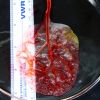 +12 +1
+12 +1Spinach Leaf Transformed Into Beating Human Heart Tissue
Using the plant like scaffolding, scientists built a mini version of a working heart, which may one day aid in tissue regeneration. By Delaney Ross.
-
 +24 +1
+24 +1Green material for refrigeration identified
Researchers from the UK and Spain have identified an eco-friendly solid that could replace the inefficient and polluting gases used in most refrigerators and air conditioners.
-
 +13 +1
+13 +1Mystery of the cargo ships that sink when their cargo suddenly liquefies
We know how to stop solid minerals converting to a liquid state mid voyage – so why does it still happen? By Susan Gourvenec.
-
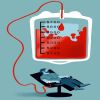 +11 +1
+11 +1The global tide of blood in history, medicine and culture
Tilli Tansey navigates the extraordinary story of the life-giving liquid.
-
 +10 +1
+10 +1Azul Maya: not only a pigment but a high-end nanomaterial used by the ancient Maya
When we talk about Maya heritage, one of the most important legacies in the Yucatan Peninsula is the “Azul Maya” (Maya Blue), a pigment developed widely by this civilization and used by different Mesoamerican cultures for the decoration of ceramics, textiles and murals, as explained by Romeo de Coss Gómez, researcher attached to the Center for Research and Advanced Studies (Cinvestav) in Mérida, Yucatán.
-
 +17 +1
+17 +1Meet the new 'renewable superpowers': nations that boss the materials used for wind and solar
The fossil fuel era won't last forever. And a new set of countries will find their reserves of lithium, copper and rare earth metals are in high demand. By Andrew Barron.
-
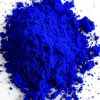 +15 +1
+15 +1First new blue discovered in 200 years is set to become beautiful new crayon.
It’s difficult to come by new colors these days, as the earth’s naturally-occurring colors have been thoroughly researched and new ones created in scientific settings are dwindling in occurrence. The last shade of blue to be discovered and named was Cobalt Blue back in 1802. Since cobalt has been found to be toxic when inhaled or ingested, its use in science has been limited and almost non-existent, though it is still used as a coloring agent for fashion items. The final name for the color will be released by the end of 2017.
-
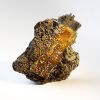 +10 +1
+10 +1Plastiglomerate
Whichever (if any) start date is chosen, plastiglomerate—a substance that is neither industrially manufactured nor geologically created—seems a fraught but nonetheless incontrovertible marker of the anthropogenic impact on the world; it is evidence of human presence written directly into the rock. By Kirsty Robertson. (Dec. 2016)
-
 +17 +1
+17 +1First Bamboo Biennale Creates Cutting-Edge Structures in Small Chinese Village
Architects from around the world show what they can create using bamboo construction in the first International Bamboo Architecture Biennale in China.
-
 +19 +1
+19 +1Photonic Hypercrystals Are Now a Reality and Light Will Never Be the Same
Recently theorized and already realized, photonic hypercrystals will further enable technologeis from Li-Fi to Solar Cells. By Dexter Johnson.
-
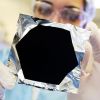 +43 +1
+43 +1World’s Blackest Material Now Comes in a Spray Can
Vantablack is now available in a spray-on form that blocks 99.8 percent of ultraviolet, visible and infrared light — enough to make an otherwise detailed 3D object appear as a flat black void. By Kacey Deamer. (Apr. 5, 2017)
-
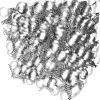 +7 +1
+7 +1Porous, 3-D forms of graphene developed at MIT can be 10 times as strong as steel but much lighter
A team of researchers at MIT has designed one of the strongest lightweight materials known, by compressing and fusing flakes of graphene, a two-dimensional form of carbon. The new material, a sponge-like configuration has a density of just 5 percent.
-
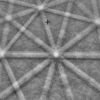 +2 +1
+2 +1A Quasicrystal’s Shocking Origin
By blasting a stack of minerals with a four-meter-long gun, scientists have found a new clue about the backstory of a very strange rock. By Natalie Wolchover.
-
 +16 +1
+16 +1Electrons slide through the hourglass on surface of bizarre material
A team of researchers at Princeton University has predicted the existence of a new state of matter in which current flows only through a set of surface channels that resemble an hourglass. These channels are created through the action of a newly theorized particle, dubbed the “hourglass fermion,” which arises due to a special property of the material...
-
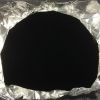 +28 +1
+28 +1One Artist Holds the Exclusive Rights in This Shade of Black
Anish Kapoor, the famed sculptor, who created the ArcelorMittal Orbit sculpture for the 2012 Olympics, has provoked the fury of fellow artists this week by acquiring the exclusive rights to use the blackest shade of black in the world.
-
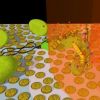 +22 +1
+22 +1New technique for rapidly killing bacteria using tiny gold disks and light
Light-activated gold nanoparticles destroy potentially deadly bacterial cells in seconds. The method could one day help hospitals treat some common infections without using antibiotics, which could help reduce the risk of spreading antibiotics resistance. (Mar. 17)
-
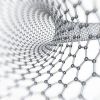 +21 +1
+21 +1This New Development Could Finally Be the Key to Space Elevators
Scientists have discovered how to produce strings of extremely tiny diamonds. The super-strong material could help build a 12.5-mile high elevator into space. By Patrick J. Kiger.
Submit a link
Start a discussion




















